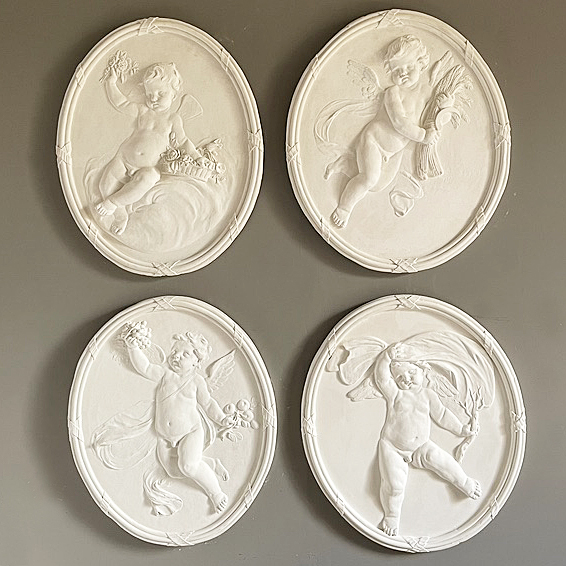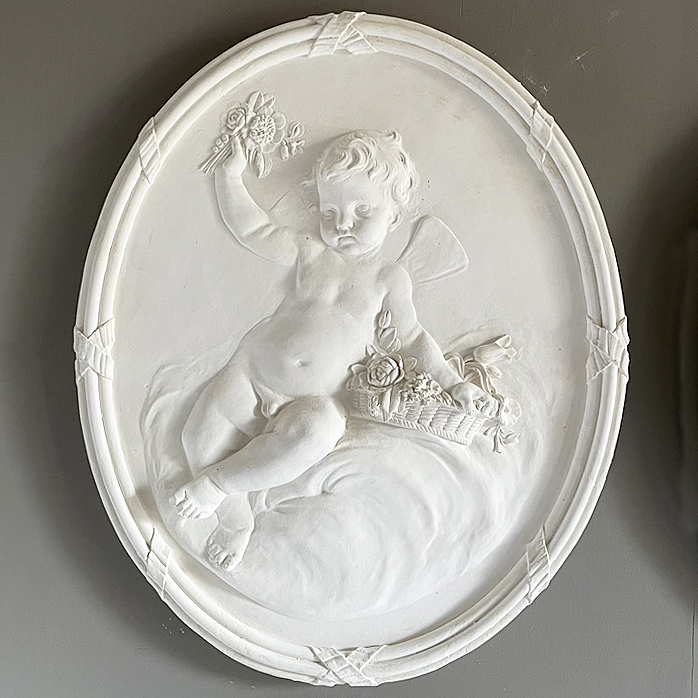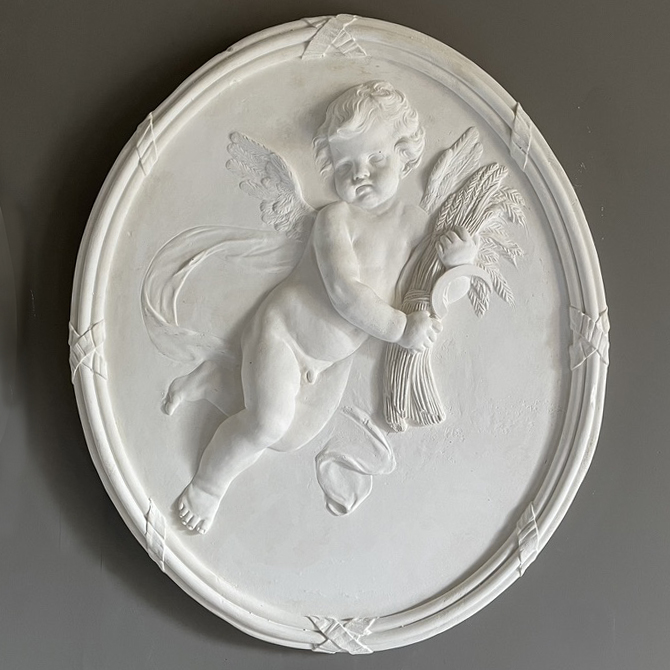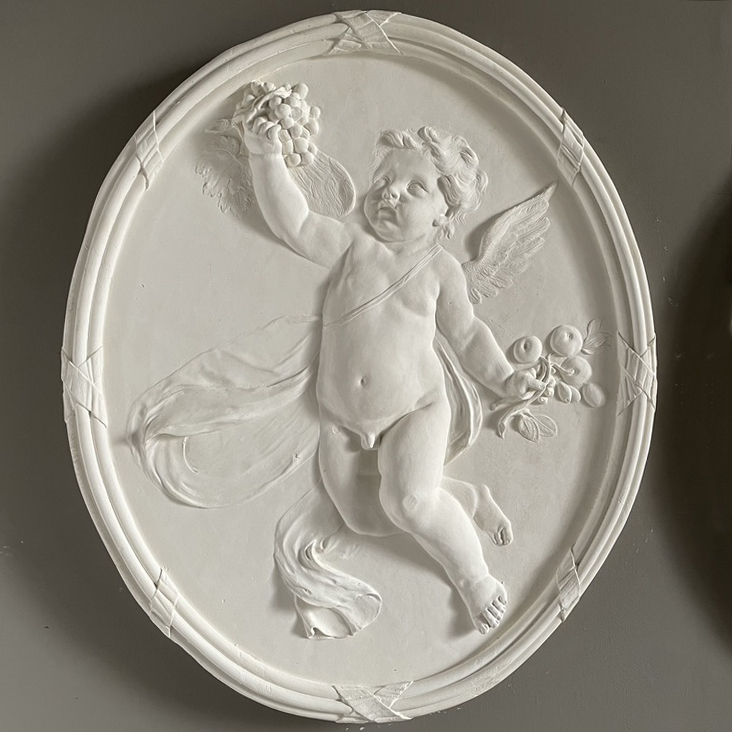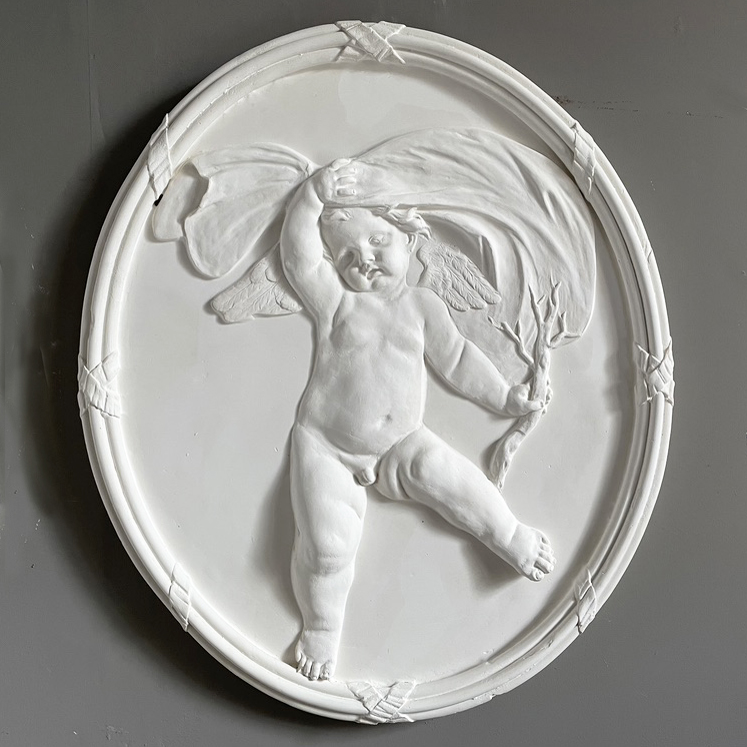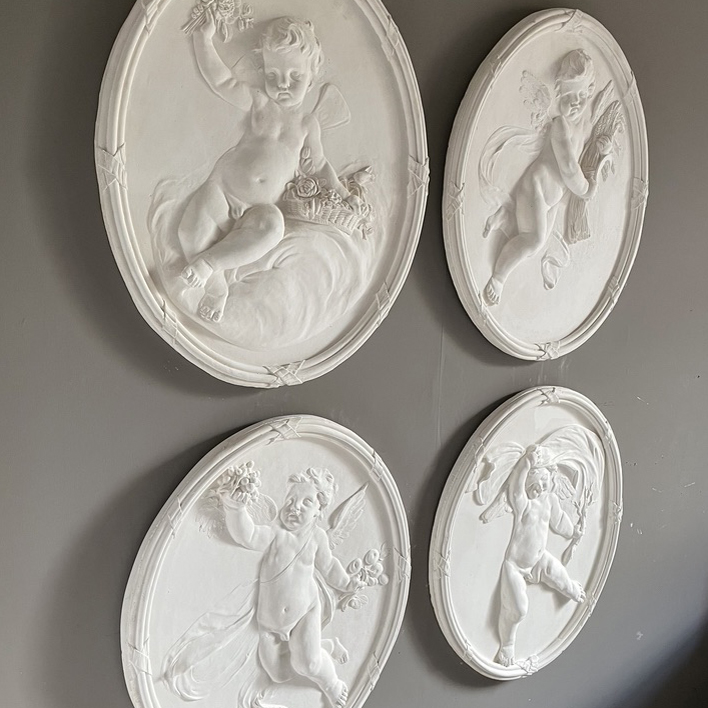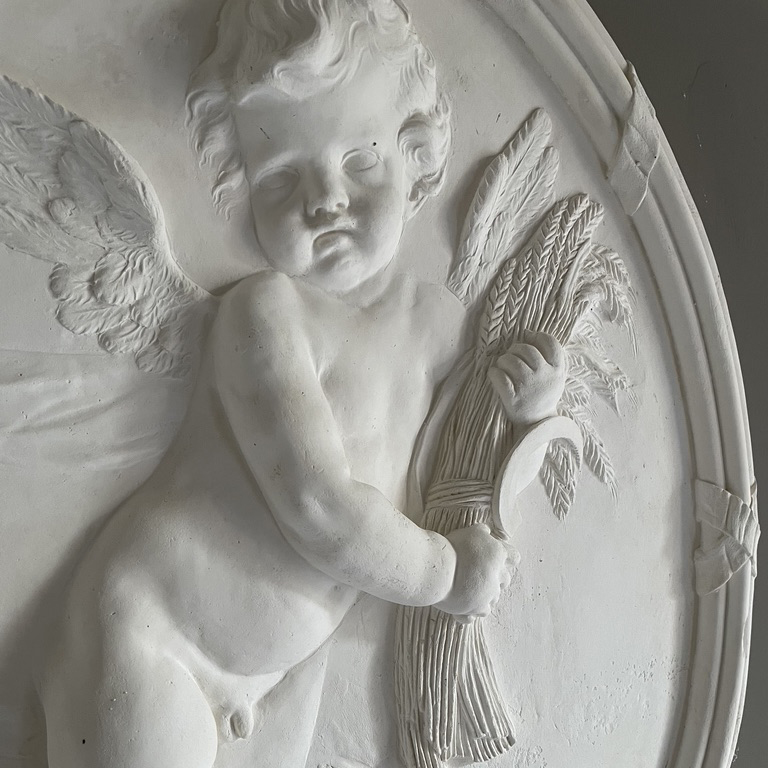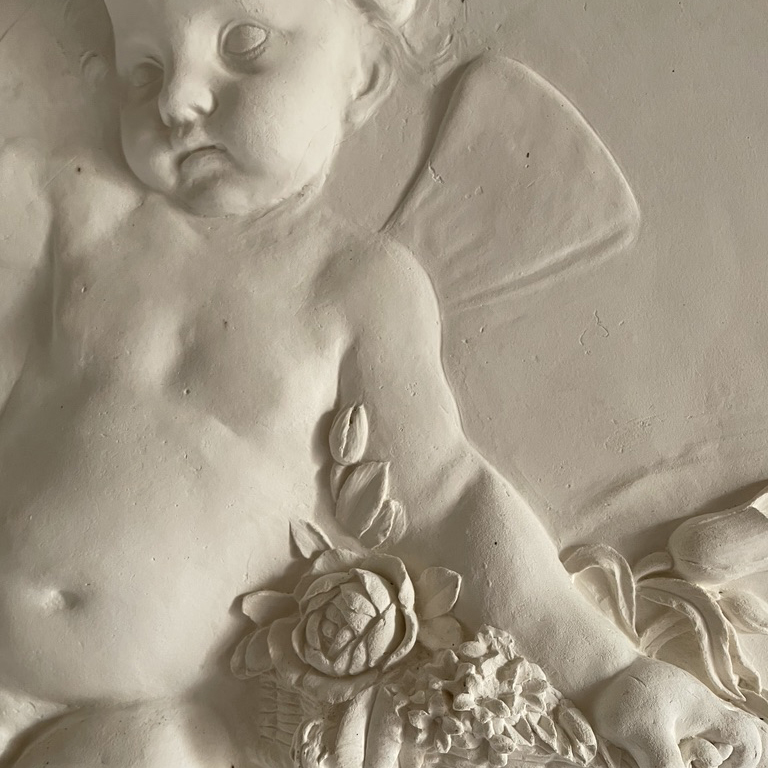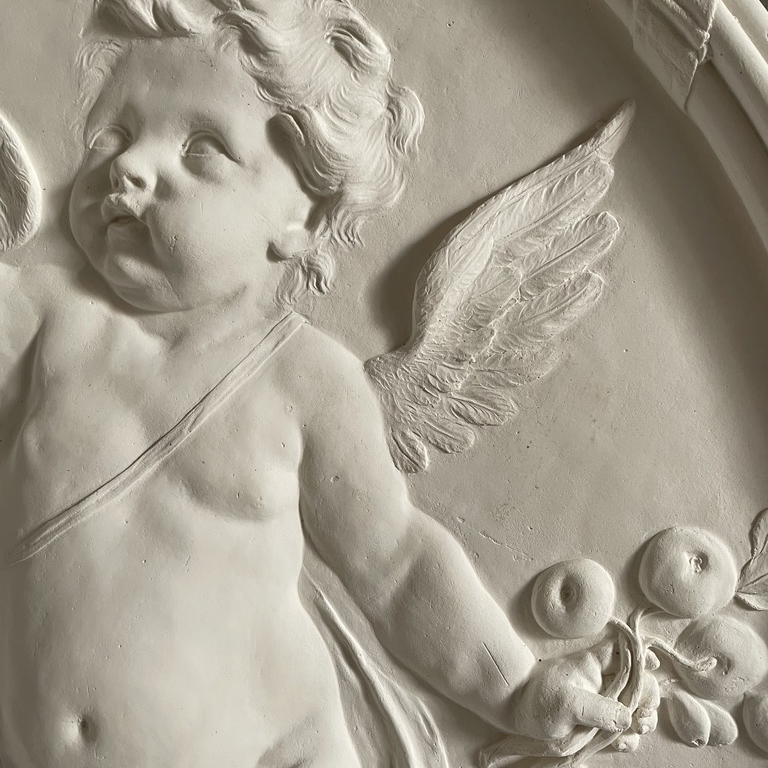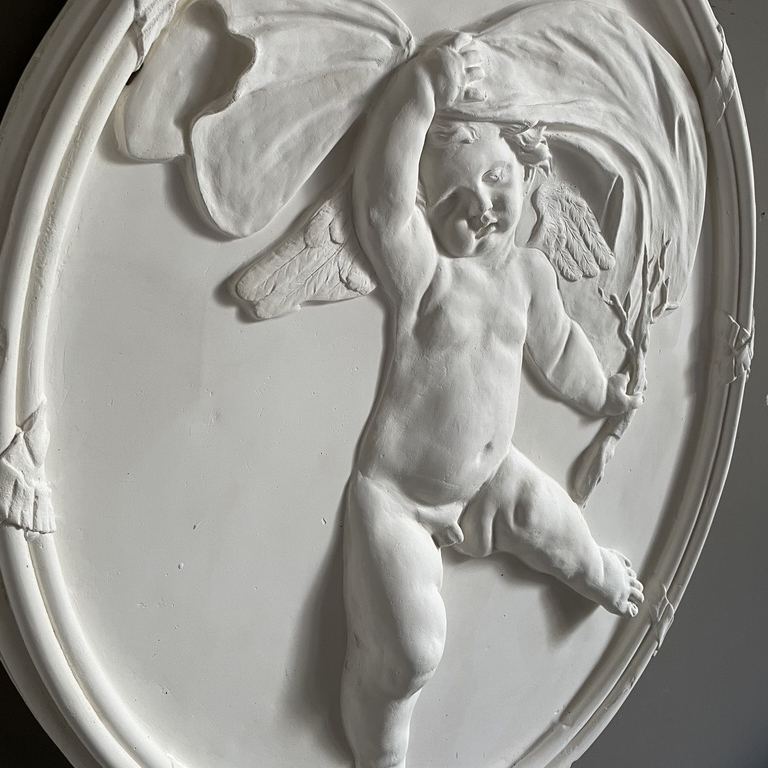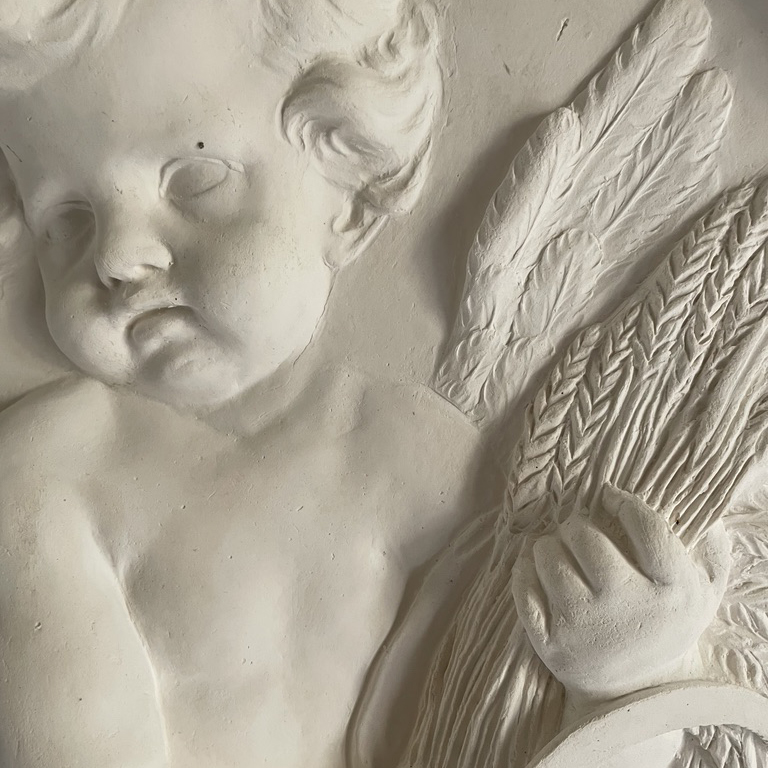No products in the basket.
A set of four English relief-cast plaster ovals
the Four Seasons, cast from 18th Century originals by Eleanor Coade,
each modelled with a winged putto bearing attributes for the seasons of the year,
£1,200 the set
In stock
Eleanor Coade (3 June 1733 – 16 November 1821) was a British businesswoman known for manufacturing Neoclassical statues, architectural decorations and garden ornaments made of Lithodipyra (Coade stone) from 1769, until her death. The recipe was a closely guarded secret.
Lithodipyra (stone fired twice) was a high quality, weather-resistant, ceramic stoneware; Coade did not invent ‘artificial stone’ – various inferior quality precursors had been both patented and manufactured over the previous forty years, but she perfected both the clay recipe and the firing process. She combined her high-quality manufacturing and artistic taste, together with entrepreneurial, business and marketing skills, to create the overwhelmingly successful stone products of her age. She produced stoneware for St George’s Chapel, Windsor; The Royal Pavilion, Brighton; Carlton House, London and the Royal Naval College, Greenwich and many other pretigious Georgian projects.
Shortly after her death, her company produced a large quantity of stoneware used in the refurbishment of Buckingham Palace.
Born in Exeter to two families of wool merchants and weavers, she ran her business, “Coade’s Artificial Stone Manufactory”; then “Coade and Sealy” and latterly “Coade” (by appointment to George III and the Prince Regent), for fifty years.
Her business came into being in late 1769, when she bought Daniel Pincot’s struggling artificial stone business at Kings Arms Stairs, Narrow Wall, Lambeth, a site now occupied by the Royal Festival Hall. She took charge and within two years, sacked Pincot for ‘representing himself as the chief proprietor’.
John Bacon, a talented sculptor, worked for Mrs Coade from 1769. In 1771 she appointed him as works supervisor; he directed both model-making and design until his death in 1799. His neo-classical models won awards from the Society for the Encouragement of Arts as well as royal patronage. Eleanor Coade developed her own talent as a modeller, exhibiting at the Society of Artists between 1773 and 1780. She also employed designers and modellers such as John Devaere (John De Vaere (1755–1830)) before he joined Josiah Wedgwood in 1790), John Charles Felix Rossi, Thomas Dubbin, Benjamin West (later a successful painter), and Joseph Panzetta (1789–1830).
Their success meant that the Coade Artificial Stone Manufactory gained the business of all the eminent Georgian architects, including Robert Adam, James Wyatt, Samuel Wyatt, Sir William Chambers, John Nash, and John Soane. The foundry opened a show room, Coade’s Gallery, on Pedlar’s Acre at the Surrey end of Westminster Bridge Road to display her products.
After 1780 Coade was commissioned by King George III to make the Gothic screen (and possibly also replace part of the ceiling) of St George’s Chapel, Windsor Castle.
In 1784 she created a comprehensive catalogue of 746 designs produced by the company. It included statues; busts; whole panels; friezes; fascia; medallions; paterae; coats of arms; balusters; pinnacles; chimneypieces; furniture; interior ornaments; and mouldings. As ceramic moulds could be reused, some had a working life of over 50 years.
In 1784 an uncle, Samuel Coade, gave her Belmont House, a holiday villa in Lyme Regis. She decorated the house extensively with Coade stone.
In 1799 Mrs Coade recruited her cousin John Sealy as a partner in her business. The company then traded as ‘Coade and Sealy’ until his death, aged 64, in October 1813, when it reverted to ‘Coade’.
In 1813 the company recruited William Croggon as manager to succeed Sealy; he was a sculptor from Grampound in Cornwall. Croggon worked as manager until Coade’s death in 1821, when he bought the firm from her estate for about £4,000 (he had hoped to inherit it). The business continued to be successful long after Coade’s death, but Croggon went bankrupt in 1833 due to both changing tastes and the failure of the Duke of York to pay his debts.
A devout Baptist, Eleanor Coade died unmarried in Camberwell and was buried in Bunhill Fields in an unmarked grave.

